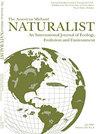在中西部农业生态系统中,北鹞(Circus hudsonius)是啮齿目动物的兼性专家吗?
IF 0.6
4区 环境科学与生态学
Q4 Agricultural and Biological Sciences
引用次数: 2
摘要
摘要我们对美国印第安纳州西部越冬的北方Harriers(Circus hudsonius)的饮食的地理和时间变化进行了评估,对在公共栖息地收集的弹丸中的猎物数量进行了多元回归。由于没有统一的方法来确定颗粒中所含的最小个体数(MNI),我们还评估了四种不同计数方法的应用是否影响了我们的结论。2018年和2019年,我们从四个栖息地采集了821粒北鹞颗粒。不同年份、月份和栖息地点的颗粒含量不同。在所有栖息地和这两年中,绵羊(Microtus spp.)是最常见的猎物群体(范围:45-73%),但遇到的频率比美国中西部其他研究报告的平均频率低35%。因此,其他小型哺乳动物猎物群体成为比大多数其他中西部研究报告的更重要的饮食成分,包括小鼠(Peromyscus;5-16%),西部收获鼠(Reithrodontomys megalotis;4-14%)和北部短尾鼩(Blarina brevicoda;8-18%)。MNI的四种计数方法对我们关于月份或栖息地之间颗粒含量的结论没有产生明显影响。印第安纳州西部的北鹞表现出极大的饮食灵活性,这可能反映了当地猎物的数量和集约农业生态系统中的生活限制。本文章由计算机程序翻译,如有差异,请以英文原文为准。
Are Northern Harriers (Circus hudsonius) Facultative Specialists on Arvicoline Rodents in Midwestern Agroecosystems?
Abstract. We assessed geographic and temporal variation in diets of wintering Northern Harriers (Circus hudsonius) in western Indiana, U.S.A., using multivariate regression on counts of prey from pellets collected at communal roosts. Because there is no uniform method for determining the minimum number of individuals (MNI) contained in a pellet, we also assessed whether application of four different counting methods influenced our conclusions. We collected 821 Northern Harrier pellets from four roosts in 2018 and 2019. Pellet contents differed between years, months, and roost sites. Voles (Microtus spp.) were the most commonly occurring prey group at all roosts and in both years (range: 45–73%), but were encountered 35% less frequently than reported on average by other studies in the midwestern U.S.A. Accordingly, other small mammal prey groups became more important dietary components than reported by most other midwestern studies, including mice (Peromyscus; 5–16%), western harvest mice (Reithrodontomys megalotis; 4–14%), and northern short-tailed shrews (Blarina brevicauda; 8–18%). The four methods of counting MNI produced no discernible effects on our conclusions concerning pellet contents between months or roosts. Northern Harriers in western Indiana exhibited great diet flexibility, which likely reflects local prey populations and constraints of life in intensive agroecosystems.
求助全文
通过发布文献求助,成功后即可免费获取论文全文。
去求助
来源期刊

American Midland Naturalist
环境科学-生态学
CiteScore
1.20
自引率
0.00%
发文量
38
审稿时长
18-36 weeks
期刊介绍:
The American Midland Naturalist has been published for 90 years by the University of Notre Dame. The connotations of Midland and Naturalist have broadened and its geographic coverage now includes North America with occasional articles from other continents. The old image of naturalist has changed and the journal publishes what Charles Elton aptly termed "scientific natural history" including field and experimental biology. Its significance and breadth of coverage are evident in that the American Midland Naturalist is among the most frequently cited journals in publications on ecology, mammalogy, herpetology, ornithology, ichthyology, parasitology, aquatic and invertebrate biology and other biological disciplines.
 求助内容:
求助内容: 应助结果提醒方式:
应助结果提醒方式:


